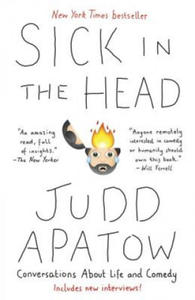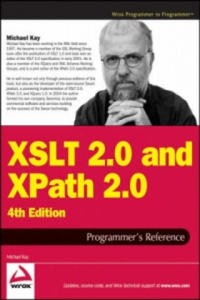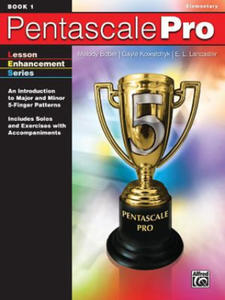libristo b c allen publishing and tonic books
- znaleziono 14 produktów w 3 sklepach
Allen Carr's Easyweigh to Lose Weight Penguin Books
Książki / Literatura obcojęzyczna
Allen Carr, international bestselling author of "The Easy Way to Stop Smoking", helps you to take off the pounds in "Allen Carr's EasyWeigh to Lose Weight". Lose weight without dieting, calorie-counting or using will-power. Allen Carr's revolutionary eating plan allows you to enjoy food, savour flavours all while you're losing weight. You can: eat your favourite foods; follow your natural instincts; avoid guilt, remorse and other bad feelings; avoid worrying about digestive ailments or feeling faint; learn to re-educate your taste; and let your appetite guide your diet Allen Carr, author of the world's bestselling guide to giving up smoking, uses his unique approach to help you lose weight simply and easily in no time at all - in "Easyweigh to Lose Weight". A happy reader says: 'I've found the answer I've been looking for for 20 years! I've done every diet you can think of. My sister urged me to buy the book - and I'm so glad I did! It isn't someone telling you what to do, it isn't a weird eating plan, it isn't a diet! There's no guilt...There's no stuggle...There's no restrictions...You just know what to do and you know you want to do it and why!'Allen Carr was an accountant who smoked 100 cigarettes a day until he discovered Easyway. Having cured his own addiction he went on to write a series of bestselling books, most famously "The Easy Way to Stop Smoking". His books have sold more than 13 million copies worldwide. Allen's lasting legacy is a dynamic, ongoing, global publishing programme and an ever-expanding worldwide network of clinics which help treat a range of issues including smoking, weight, alcohol and "other" drug addiction.
Sklep: Libristo.pl
The Ten Books on Architecture Createspace Independent Publishing Platform
Książki / Literatura obcojęzyczna
Marcus Vitruvius Pollio, a Roman architect and engineer flourishing in the first century B.C., was the author of the oldest and most influential work on architecture in existence. For hundreds of years, the specific instructions he gave in his "Ten Books o
Sklep: Libristo.pl
C.S.Lewis William B Eerdmans Publishing Co
Książki / Literatura obcojęzyczna
From early childhood, C. S. Lewis engaged the world around him primarily through the medium of books. He read voraciously, and his own writing covers a broad range of genres. This new study by Lionel Adey is unique in its attempt to trace the development of C. S. Lewis as a maker and reader of books. Adey shows how the two sides of Lewis's personality, the "Dreamer" and the "Mentor," affected his writing in its various modes: literary history and criticism, fiction for adults and for children, poetry, essays and addresses, and letters. Adey also discusses the formative biographical events in Lewis's life and offers an estimate of Lewis's achievement and legacy as a writer.
Sklep: Libristo.pl
Przy sercu Twoim. Kantata dla NMP - Praca zbiorowa
Książki & Multimedia > Muzyka
Opis - Kompozycja, składająca się z 14 utworów, została napisana dla uczczenia drugiej rocznicy śmierci Jana Pawła II. Proste teksty ks. Mateusza Jeża są hołdem oddanym Matce Bożej. Muzyka Zbigniewa Małkowicza łączy w sobie wiele stylów: smyczki brzmią klasycznie, melodie wpadają w ucho jak popowe przeboje, śpiew chóru zahacza o gospel, a bas wybija chwilami jazzowo-funkowe rytmy. Wszystko razem jest mieszanką przyjemną dla ucha, a dawka liryzmu zawarta w utworach sprzyja modlitewnemu skupieniu.Do udziału w nagraniu płyty Przy sercu Twoim zespół LUMEN zaprosił kilku gości specjalnych. Należy do nich m.in. Dariusz Tokarzewski z grupy Vox, który wystąpił w świetnym duecie z młodziutką Aleksandrą Małkowicz. Pociesz mnie to jedna z najładniejszych piosenek na tym krążku. Ale dobrych kompozycji jest tu więcej. Wśród tych bardziej dynamicznych wyróżnia się niewątpliwie utwór Królowo nasza, aniołów Pani, budzący delikatne skojarzenia z twórczością TGD. Wśród spokojniejszych fragmentów zwraca uwagę utwór tytułowy i Kołysanka, wprowadzająca nas w klimat Bożego Narodzenia.Różnorodność stylistyczna tej płyty zespołu LUMEN sprawia, że każdy znajdzie tu coś dla siebie. Nazwa - Przy sercu Twoim. Kantata dla NMP Autor - Praca zbiorowa Oprawa - OT Wydawca - AGAPE Kod ISBN - 9788364774461 Kod EAN - 9788364774461 Rok wydania - 2017 Format - x / 148 / 210 Ilość stron - 58 Podatek VAT - 5%
Sklep: InBook.pl
Anti-Aging Ingredients for Cosmetics Formulators Chemical Publishing Co Inc.,U.S.
Książki / Literatura obcojęzyczna
The new 9th edition of Harry's Cosmeticology is available as a 3 volume set containing over 2600 pages of new information on the recent changes in the cosmetic and personal care industry. Chemical Publishing is now offering key parts of the title for those interested in a particular subject area covered in the book. Harry's Cosmeticology 9th Edition has developed a new line of "Focus Books" for this purpose. Focus books are a series of selected chapters that can be used as a reference guide for a particular subject area. This focus book covers: TOPICAL RETINOIDS - Author - Aanand N. Geria, MD - 4.3.1.1 Introduction - 4.3.1.2 Pharmacology - 4.3.1.3 Indications - a. Acne - b. Melasma and Post-Inflammatory Hyperpigmentation - c. Photo-Aging - 4.3.1.4 Adverse Effects - PEPTIDES FOR ANTI-AGING SKIN CARE - Author - Howard Epstein, Ph.D. - 4.3.2.1 Peptides for Anti-Aging Skin Care - 4.3.2.2 What is a peptide? - 4.3.2.3 Skin Structure and Peptide Categories - 4.3.2.4 Bioactive Peptides Marketed for Skin Care Products - PART 4.3.3 - MICRORNAS IN SKIN PHYSIOLOGY - Authors - Jean-Marie Botto (Ph.D.) - 4.3.3.1 RNA interference and microRNAs timeline of the discoveries - a. Discovery of microRNAs - b. The concept of RNA interference - 4.3.3.2 MicroRNAs - nomenclature, structure, function, mechanism of action - 4.3.3.3 MicroRNAs regulate various aspects of human physiology and epigenetics - 4.3.3.4 MicroRNAs and skin physiology - a. Introduction on skin - b. MicroRNAs and cutaneous biology - c. Epidermal renewal and skin barrier - d. MiR-203 is a master regulator of epidermal differentiation - e. P63, SOCS3, Zfp281, JUN, and ABL1 are the major mir-targets in the epidermis - f. Other microRNAs important in epidermal renewal - g. Skin pigmentation - h. Dermal physiology - i. MicroRNAs and the hypodermal adipocytes - j. Hair follicle morphogenesis - 4.3.3.5 Interest of microRNAs in the evaluation in vitro of anti-aging dermo-cosmetic ingredients - a. Skin aging - b. MicroRNAs and cellular senescence - c. Tissue-engineering and microRNA studies - PART 4.3.4 - AMINO ACIDS - Author - Bruce W. Gesslein - 4.3.4.1 Overview of Amino Acids - a. Production - b. Properties - 4.3.4.2 The Appearance of Aging of Skin and Hair - a. Skin - b. Wrinkling - c. Elasticity - d. Clarity - e. Hydration - f. UV Damage - 4.3.4.3 Hair - a. Breakage - b. Dullness - c. Elasticity - d. Roughness - 4.3.4.4 Formulation for Skin Care - a. Cleansers - b. Moisturizers - c. Serums - 4.3.4.5 Hair Care - a. Shampoos - b. Conditioners - PART 4.3.5 - AHAS AND BEYOND: ANTI-AGING INGREDIENTS AND THEIR BENEFITS FOR ALL LAYERS OF THE SKIN - Editor - Ronni L. Weinkauf, Ph.D. - Peter Konish - Stacy S. Hawkins, Ph.D. - 4.3.5.1 Introduction - 4.3.5.2 Alpha-Hydroxy Acids (AHAs) - 4.3.5.3 Quantitative Clinical Benefits of AHAs - 4.3.5.4 Cellular and Structural Changes Associated with AHAs - 4.3.5.5 Polyh
Sklep: Libristo.pl
Soul Search First Edition Design eBook Publishing
Książki / Literatura obcojęzyczna
What happens when we die? Does everything we are just stop? Is consciousness lost forever? Or does some vital spark inside us, a spirit or a soul, live on? We find it almost impossible to think about not having a mind, of our awareness being snuffed out like a candle. Yet the stark fact is that within a century or so, everyone alive today - all six billion of us - will be dead. Humans are the only creatures on earth that know they are going to die. But that foreknowledge has come fairly recently and it flies in the face of four billion years of evolution. Those eons have genetically conditioned us to do all we can to preserve ourselves and our kin. The result is that we are caught in a dilemma. We are programmed to survive by our genes yet made painfully aware of our mortality by our forward-looking brain. If we admit that death is inevitable, then our will to survive may be fatally weakened. On the other hand, if we deny death, we have to turn a blind eye to a patent fact of the real world. Only one avenue of escape is possible - belief in an afterlife. With this we can face the nightmare that death poses to the rational mind. We distance ourselves from death by institutionalizing it. Whereas in earlier times most people spent their last days at home in the bosom of family and friends, today four-fifths of us are removed to hospitals or nursing homes. We are hidden from the gaze of the young and healthy and tended to by strangers. As the end approaches, we are discreetly moved to wards for the terminally ill and plugged into life-support machines. Technology takes over. And when we do eventually die, it is often the inadequacy of the equipment or the shortcomings of the treatment that are blamed. Instead of accepting death as a natural and inevitable fact of life, we are in danger of convincing ourselves that, given further medical advances, we shall be able to stave it off for as long as we like. "Some people want to achieve immortality through their works or their descendants," said Woody Allen. "I want to achieve it through not dying." Now, for the first time, science seems to be holding out the slender hope of cheating death. Already, some of our vital parts can be replaced with natural or synthetic substitutes. In time, it seems, the transplant surgeon will be able to do for a human being what any competent mechanic in a well-equipped garage can do for a car. Key words - Death, Reincarnation, Consciousness, Cosmos, Science, Soul, Afterlife, Universe Author Bio - David Darling is the author of more than 40 titles including narrative science titles: Megacatastrophes!, We Are Not Alone, Gravity's Arc, Equations of Eternity, a New York Times Notable Book, and Deep Time. He is also the author of the bestseller-The Universal Book of Mathematics: From Abracadabra to Zeno's Paradoxes. Darling's other titles include The Universal Book of Astronomy, and The Complete Book of Spaceflight, as well as more than 30 children's books. His articles and reviews have appeared in Astronomy, Omni, Penthouse, New Scientist, the New York Times, and the Guardian, among others. David Darling was born in Glossop, Derbyshire, England, on July 29, 1953, and grew up in the beautiful Peak District, close to Kinder Scout for those who know the area. He went to New Mills Grammar School and then on to Sheffield University, where he earned his B.Sc. in physics in 1974, and Manchester University, for my Ph.D. in astronomy in 1977. David Darling's interests, apart from his work and family, include singing, song-writing, and playing guitar.
Sklep: Libristo.pl
Sick in the Head Random House
Książki / Literatura obcojęzyczna
NEW YORK TIMES BESTSELLER - NAMED ONE OF THE BEST BOOKS OF THE YEAR BY THE A.V. CLUB - Includes new interviews! From the writer and director of Knocked Up and the producer of Freaks and Geeks comes a collection of intimate, hilarious conversations with the biggest names in comedy from the past thirty years--including Mel Brooks, Jerry Seinfeld, Jon Stewart, Roseanne Barr, Harold Ramis, Louis C.K., Chris Rock, and Lena Dunham. Before becoming one of the most successful filmmakers in Hollywood, Judd Apatow was the original comedy nerd. At fifteen, he took a job washing dishes in a local comedy club--just so he could watch endless stand-up for free. At sixteen, he was hosting a show for his local high school radio station in Syosset, Long Island--a show that consisted of Q&As with his comedy heroes, from Garry Shandling to Jerry Seinfeld. They talked about their careers, the science of a good joke, and their dreams of future glory (turns out, Shandling was interested in having his own TV show one day and Steve Allen had already invented everything). Thirty years later, Apatow is still that same comedy nerd--and he's still interviewing funny people about why they do what they do. Sick in the Head gathers Apatow's most memorable and revealing conversations into one hilarious, wide-ranging, and incredibly candid collection that spans not only his career but his entire adult life. Here are the comedy legends who inspired and shaped him, from Mel Brooks to Steve Martin. Here are the contemporaries he grew up with in Hollywood, from Spike Jonze to Sarah Silverman. And here, finally, are the brightest stars in comedy today, many of whom Apatow has been fortunate to work with, from Seth Rogen to Amy Schumer. And along the way, something kind of magical happens: What started as a lifetime's worth of conversations about comedy becomes something else entirely. It becomes an exploration of creativity, ambition, neediness, generosity, spirituality, and the joy that comes from making people laugh. Loaded with the kind of back-of-the-club stories that comics tell one another when no one else is watching, this fascinating, personal (and borderline-obsessive) book is Judd Apatow's gift to comedy nerds everywhere.
Sklep: Libristo.pl
Sams Teach Yourself Adobe Photoshop CS3 in 24 Hours Sams Publishing
Informatyka
Adobe Photoshop is the world's leading image manipulation software. Used by both professional and amateur graphic designers, it is the de facto standard for print and Web publishing. Sams Teach Yourself Photoshop CS3 in 24 Hours is an easily accessible tutorial that uses a friendly, conversational approach to teach readers the basics. Photoshop is an immense tool and can be intimidating for the beginning user, but the book makes it easy to learn the basic techniques involved in creating and manipulating images with Photoshop.Sams Teach Yourself Adobe
Sklep: Albertus.pl
Hunger Games A-Z John Blake Publishing
Książki / Literatura obcojęzyczna
A is for...Action Scenes. The Hunger Game trilogy is full of nail-biting action and tense battle scenes. B is for...Bestselling Books. The Hunger Games and Catching Fire, the first two books in the series, were each New York Times bestsellers, and Mockingjay topped all US bestseller lists. C is for...Suzanne Collins, the author of the books. She has also adapted The Hunger Games for the much-awaited upcoming film starring Jennifer Lawrence and Liam Hemsworth.
Sklep: Libristo.pl
Consolidated-Vultee PB4Y-2 Privateer: The erational History of the U.S. Navy's World War II Patrol/Bomber Aircraft Schiffer Publishing Ltd
Książki / Literatura obcojęzyczna
Consolidated-Vultee Aircraft Corporation's (Convair) attempt to make a few design changes to its famous B-24 Liberator for the U.S. Navy in 1942 eventually evolved into the PB4Y-2 Privateer, a 70,000-pound patrol bomber equipped with state-of-the-art elect
Sklep: Libristo.pl
XSLT 2.0 and XPath 2.0 Programmer's Reference 4e John Wiley & Sons Inc
Książki / Literatura obcojęzyczna
This book is primarily a practical reference book for professional XSLT developers. It assumes no previous knowledge of the language, and many developers have used it as their first introduction to XSLT; however, it is not structured as a tutorial, and there are other books on XSLT that provide a gentler approach for beginners. The book does assume a basic knowledge of XML, HTML, and the architecture of the Web, and it is written for experienced programmers. There's no assumption that you know any particular language such as Java or Visual Basic, just that you recognize the concepts that all programming languages have in common. The book is suitable both for XSLT 1.0 users upgrading to XSLT 2.0, and for newcomers to XSLT. The book is also equally suitable whether you work in the Java or .NET world. As befits a reference book, a key aim is that the coverage should be comprehensive and authoritative. It is designed to give you all the details, not just an overview of the 20 percent of the language that most people use 80 percent of the time.It's designed so that you will keep coming back to the book whenever you encounter new and challenging programming tasks, not as a book that you skim quickly and then leave on the shelf. If you like detail, you will enjoy this book; if not, you probably won't. But as well as giving the detail, this book aims to explain the concepts, in some depth. It's therefore a book for people who not only want to use the language but who also want to understand it at a deep level. The book aims to tell you everything you need to know about the XSLT 2.0 language. It gives equal weight to the things that are new in XSLT 2.0 and the things that were already present in version 1.0. The book is about the language, not about specific products. However, there are appendices about Saxon (the author's own implementation of XSLT 2.0), about the Altova XSLT 2.0 implementation, and about the Java and Microsoft APIs for controlling XSLT transformations, which will no doubt be upgraded to handle XSLT 2.0 as well as 1.0. A third XSLT 2.0 processor, Gestalt, was released shortly before the book went to press, too late to describe it in any detail. But the experience of XSLT 1.0 is that there has been a very high level of interoperability between different XSLT processors, and if you can use one of them, then you can use them all.In the previous edition we split XSLT 2.0 and XPath 2.0 into separate volumes. The idea was that some readers might be interested in XPath alone. However, many bought the XSLT 2.0 book without its XPath companion and were left confused as a result; so this time, the material is back together. The XPath reference information is in self-contained chapters, so it should still be accessible when you use XPath in contexts other than XSLT. The book does not cover XSL Formatting Objects, a big subject in its own right. Nor does it cover XML Schemas in any detail. If you want to use these important technologies in conjunction with XSLT, there are other books that do them justice. This book contains twenty chapters and eight appendixes (the last of which is a glossary) organized into four parts. The following section outlines what you can find in each part, chapter, and appendix. Part I: Foundations: The first part of the book covers essential concepts. You should read these before you start coding.If you ignore this advice, as most people do, then you read them when you get to that trough of despair when you find it impossible to make the language do anything but the most trivial tasks. XSLT is different from other languages, and to make it work for you, you need to understand how it was designed to be used. Chapter 1: XSLT in Context: This chapter explains how XSLT fits into the big picture: how the language came into being and how it sits alongside other technologies. It also has a few simple coding examples to keep you alert. Chapter 2: The XSLT Processing Model: This is about the architecture of an XSLT processor: the inputs, the outputs, and the data model. Understanding the data model is perhaps the most important thing that distinguishes an XSLT expert from an amateur; it may seem like information that you can't use immediately, but it's knowledge that will stop you making a lot of stupid mistakes. Chapter 3: Stylesheet Structure: XSLT development is about writing stylesheets, and this chapter takes a bird's eye view of what stylesheets look like.It explains the key concepts of rule-based programming using templates, and explains how to undertake programming-in-the-large by structuring your application using modules and pipelines. Chapter 4: Stylesheets and Schemas: A key innovation in XSLT 2.0 is that stylesheets can take advantage of knowledge about the structure of your input and output documents, provided in the form of an XML Schema. This chapter provides a quick overview of XML Schema to describe its impact on XSLT development. Not everyone uses schemas, and you can skip this chapter if you fall into that category. Chapter 5: The Type System: XPath 2.0 and XSLT 2.0 offer strong typing as an alternative to the weak typing approach of the 1.0 languages. This means that you can declare the types of your variables, functions, and parameters, and use this information to get early warning of programming errors. This chapter explains the data types available and the mechanisms for creating user-defined types. Part II: XSLT and XPath Reference: This section of the book contains reference material, organized in the hope that you can easily find what you need when you need it.It's not designed for sequential reading, though you might well want to leaf through the pages to discover what's there. Chapter 6: XSLT Elements: This monster chapter lists all the XSLT elements you can use in a stylesheet, in alphabetical order, giving detailed rules for the syntax and semantics of each element, advice on usage, and examples. This is probably the part of the book you will use most frequently as you become an expert XSLT user. It's a "no stone unturned" approach, based on the belief that as a professional developer you need to know what happens when the going gets tough, not just when the wind is in your direction. Chapter 7: XPath Fundamentals: This chapter explains the basics of XPath: the low-level constructs such as literals, variables, and function calls. It also explains the context rules, which describe how the evaluation of XPath expressions depends on the XSLT processing context in which they appear. Chapter 8: XPath: Operators on Items: XPath offers the usual range of operators for performing arithmetic, boolean comparison, and the like.However, these don't always behave exactly as you would expect, so it's worth reading this chapter to see what's available and how it differs from the last language that you used. Chapter 9: XPath: Path Expressions: Path expressions are what make XPath special; they enable you to navigate around the structure of an XML document. This chapter explains the syntax of path expressions, the 13 axes that you can use to locate the nodes that you need, and associated operators such as union, intersection, and difference. Chapter 10: XPath: Sequence Expressions: Unlike XPath 1.0, in version 2.0 all values are sequences (singletons are just a special case). Some of the most important operators in XPath 2.0 are those that manipulate sequences, notably the "for" expression, which translates one sequence into another by applying a mapping. Chapter 11: XPath: Type Expressions: The type system was explained in Chapter 5; this chapter explains the operations that you can use to take advantage of types. This includes the "cast" operation which is used to convert values from one type to another.A big part of this chapter is devoted to the detailed rules for how these conversions are done.Chapter 12: XSLT Patterns: This chapter returns from XPath to a subject that's specific to XSLT. Patterns are used to define template rules, the essence of XSLT's rule-based programming approach. The reason for explaining them now is that the syntax and semantics of patterns depends strongly on the corresponding rules for XPath expressions. Chapter 13: The Function Library: XPath 2.0 includes a library of functions that can be called from any XPath expression; XSLT 2.0 extends this with some additional functions that are available only when XPath is used within XSLT. The library has grown immensely since XPath 1.0. This chapter provides a single alphabetical reference for all these functions. Chapter 14: Regular Expressions: Processing of text is an area where XSLT 2.0 and XPath 2.0 are much more powerful than version 1.0, and this is largely through the use of constructs that exploit regular expressions. If you're familiar with regexes from languages such as Perl, this chapter tells you how XPath regular expressions differ. If you're new to the subject, it explains it from first principles.Chapter 15: Serialization: Serialization in XSLT means the ability to generate a textual XML document from the tree structure that's manipulated by a stylesheet. This isn't part of XSLT processing proper, so (following W3C's lead) it's separated it into its own chapter. You can control serialization from the stylesheet using an declaration, but many products also allow you to control it directly via an API. Part III: Exploitation: The final section of the book is advice and guidance on how to take advantage of XSLT to write real applications. It's intended to make you not just a competent XSLT coder, but a competent designer too. The best way of learning is by studying the work of others, so the emphasis here is on practical case studies. Chapter 16: Extensibility: This chapter describes the "hooks" provided in the XSLT specification to allow vendors and users to plug in extra functionality. The way this works will vary from one implementation to another, so we can't cover all possibilities, but one important aspect that the chapter does cover is how to use such extensions and still keep your code portable.Chapter 17: Stylesheet Design Patterns: This chapter explores a number of design and coding patterns for XSLT programming, starting with the simplest "fill-in-the-blanks" stylesheet, and extending to the full use of recursive programming in the functional programming style, which is needed to tackle problems of any computational complexity. This provides an opportunity to explain the thinking behind functional programming and the change in mindset needed to take full advantage of this style of development. Chapter 18: Case Study: XMLSpec: XSLT is often used for rendering documents, so where better to look for a case study than the stylesheets used by the W3C to render the XML and XSLT specifications, and others in the same family, for display on the web? The resulting stylesheets are typical of those you will find in any publishing organization that uses XML to develop a series of documents with a compatible look-and-feel. Chapter 19: Case Study: A Family Tree: Displaying a family tree is another typical XSLT application.This example with semi-structured data-a mixture of fairly complex data and narrative text-that can be presented in many different ways for different audiences. It also shows how to tackle another typical XSLT problem, conversion of the data into XML from a legacy text-based format. As it happens, this uses nearly all the important new XSLT 2.0 features in one short stylesheet. But another aim of this chapter is to show a collection of stylesheets doing different jobs as part of a complete application. Chapter 20: Case Study: Knight's Tour: Finding a route around a chessboard where a knight visits every square without ever retracing its steps might sound a fairly esoteric application for XSLT, but it's a good way of showing how even the most complex of algorithms are within the capabilities of the language. You may not need to tackle this particular problem, but if you want to construct an SVG diagram showing progress against your project plan, then the problems won't be that dissimilar. Part IV: Appendices: A ppendix A: XPath 2.0 Syntax Summary: Collects the XPath grammar rules and operator precedences into one place for ease of reference.Appendix B: Error Codes: A list of all the error codes defined in the XSLT and XPath language specifications, with brief explanations to help you understand what's gone wrong. Appendix C: Backward Compatibility: The list of things you need to look out for when converting applications from XSLT 1.0. Appendix D: Microsoft XSLT Processors: Although the two Microsoft XSLT processors don't yet support XSLT 2.0, we thought many readers would find it useful to have a quick summary here of the main objects and methods used in their APIs. Appendix E: JAXP: the Java API for XML Processing: JAXP is an interface rather than a product. Again, it doesn't have explicit support yet for XSLT 2.0, but Java programmers will often be using it in XSLT 2.0 projects, so the book includes an overview of the classes and methods available. Appendix F: Saxon: At the time of writing Saxon (developed by the author of this book) provides the most comprehensive implementation of XSLT 2.0 and XPath 2.0, so its interfaces and extensions are covered in some detail. Appendix G: Altova: Altova, the developers of XML Spy, have an XSLT 2.0 processor that can be used either as part of the development environment or as a freestanding component.This appendix gives details of its interfaces. Appendix H: Glossary Note: CD-ROM/DVD and other supplementary materials are not included as part of eBook file.
Sklep: Libristo.pl
Reality, Grief, Hope William B Eerdmans Publishing Co
Książki / Literatura obcojęzyczna
Walter Brueggemann is one of the most highly regarded Old Testament scholars of our time; talk-show host Krista Tippett has even called him "a kind of theological rock star." In this new book Brueggemann probes the tasks performed by the ancient prophets of Israel and points out striking correlations between the destruction of Jerusalem in 587 b.c.e. and the catastrophic crisis of 9/11 in a.d. 2001. Brueggemann identifies a characteristic ideology of "exceptionalism" - chosenness, entitlement, privilege - which must be countered by prophetic realism and truth-telling. Denial must give way to honest grief. And, finally, widespread despair must be overcome by a buoyant hope. This sequence of ideology-realism, denial-grief, and despair-hope corresponds to Brueggemann's unpacking of the books of Jeremiah, Lamentations, and Isaiah. Thoughtful readers will find provocative fare aplenty in Brueggemann's Reality, Grief, Hope.
Sklep: Libristo.pl
Shadow of the Wind Penguin Publishing Group
Książki / Literatura obcojęzyczna
From A to Z, the Penguin Drop Caps series collects 26 unique Hardcovers featuring cover art by Jessica Hische §§It all begins with a letter. Fall in love with Penguin Drop Caps, a new series of twenty-six collectible and hardcover editions, each with a type cover showcasing a gorgeously illustrated letter of the alphabet. In a design collaboration between Jessica Hische and Penguin Art Director Paul Buckley, the series features unique cover art by Hische, a superstar in the world of type design and illustration, whose work has appeared everywhere from Tiffany & Co. to Wes Anderson's recent film Moonrise Kingdom to Penguin's own bestsellers Committed and Rules of Civility . With exclusive designs that have never before appeared on Hische's hugely popular Daily Drop Cap blog, the Penguin Drop Caps series debuted with an 'A' for Jane Austen's Pride and Prejudice , a 'B' for Charlotte Brönte's Jane Eyre , and a 'C' for Willa Cather's My Antonia . It continues with more perennial classics, perfect to give as elegant gifts or to showcase on your own shelves.§§Z is for Zafón . Barcelona, 1945: A city slowly heals in the aftermath of the Spanish Civil War. Daniel, an antiquarian book dealer's son who mourns the loss of his mother, finds solace in what he finds in the "cemetery of lost books", a mysterious book entitled The Shadow of the Wind , by one Julian Carax. But when he sets out to find the author's other works, he makes a shocking discovery: someone has been systematically destroying every copy of every book Carax has written. In fact, Daniel may have the last of Carax's books in existence. Soon Daniel's seemingly innocent quest opens a door into one of Barcelona's darkest secrets--an epic story of murder, madness, and doomed love.
Sklep: Libristo.pl
PENTASCALE PRO BOOK 1 Alfred Publishing Co (UK) Ltd
Książki / Literatura obcojęzyczna
These first books in Alfred's Lesson Enhancement Series introduce students to all major and minor five finger patterns in all 12 keys. The pentascales are divided into similar groups to promote ease in learning. Book 1 includes the Group 1 Keys (C, G, F major and minor) and the Group 2 Keys (D, A, E major and minor). Book 2 includes the Group 3 Keys (D-flat, A-flat, E-flat major and minor) and the Group 4 Keys (B-flat, B, G-flat or F-sharp major and minor). In each book, technical exercises are provided in each key with an interesting teacher accompaniment. A short solo is included for each key, in addition to an optional teacher duet accompaniment. Two or three of these solos can be grouped together for variety in performance.
Sklep: Libristo.pl
Sklepy zlokalizowane w miastach: Warszawa, Kraków, Łódź, Wrocław, Poznań, Gdańsk, Szczecin, Bydgoszcz, Lublin, Katowice
Szukaj w sklepach lub całym serwisie
1. Sklepy z libristo pl b c allen publishing and tonic books
2. Szukaj na wszystkich stronach serwisu
t1=0.061, t2=0, t3=0, t4=0, t=0.061














